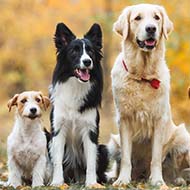Ants recognise and treat infected wounds, study finds

Matabele ants are often injured when hunting for termites.
Matabele ants (Megaponera analis) are able to identify whether wounds are infected and treat them with antimicrobial compounds and proteins, a new study has found.
The predatory ant, which lives in Sub-Saharan Africa, only eats termites. Worker ants are frequently wounded by their prey when hunting, and the bacterium Pseudomonas aeruginosa can cause lethal infections in the injured.
The researchers filmed inside a nest to see how the ants treated a variety of injured nest mates, some with infected wounds and some with sterile wounds.
The team observed that nursing ants first ‘licked’ the wound with their mouthparts and were more likely to treat infected wounds than sterile wounds.
Chemical analysis by the researchers showed that wound infection was associated with particular changes in the cuticular hydrocarbon profile. Cuticular hydrocarbons are often used by ants as a source of information.
The infected wounds were treated by the ants with a secretion taken from the metapleural gland on the side of the thorax. The secretion was found to contain 112 chemical compounds and 41 proteins, half of which have antimicrobial or healing properties.
The mortality rate of infected ants treated by their nest mates with the antimicrobial secretion was reduced by 90 per cent.
Dr Erik Frank, Emmy Noether group leader at the University of Würzburg and one of the authors of the study, said: “With the exception of humans, I know of no other living creature that can carry out such sophisticated medical wound treatments.”
The study, ‘Targeted treatment of injured nestmates with antimicrobial compounds in an ant society’, has been published in the journal Nature Communications.
Image © Shutterstock



 A free webinar exploring the development of the Kennel Club's registration system and the evolution of closed breed registers has been announced.
A free webinar exploring the development of the Kennel Club's registration system and the evolution of closed breed registers has been announced.